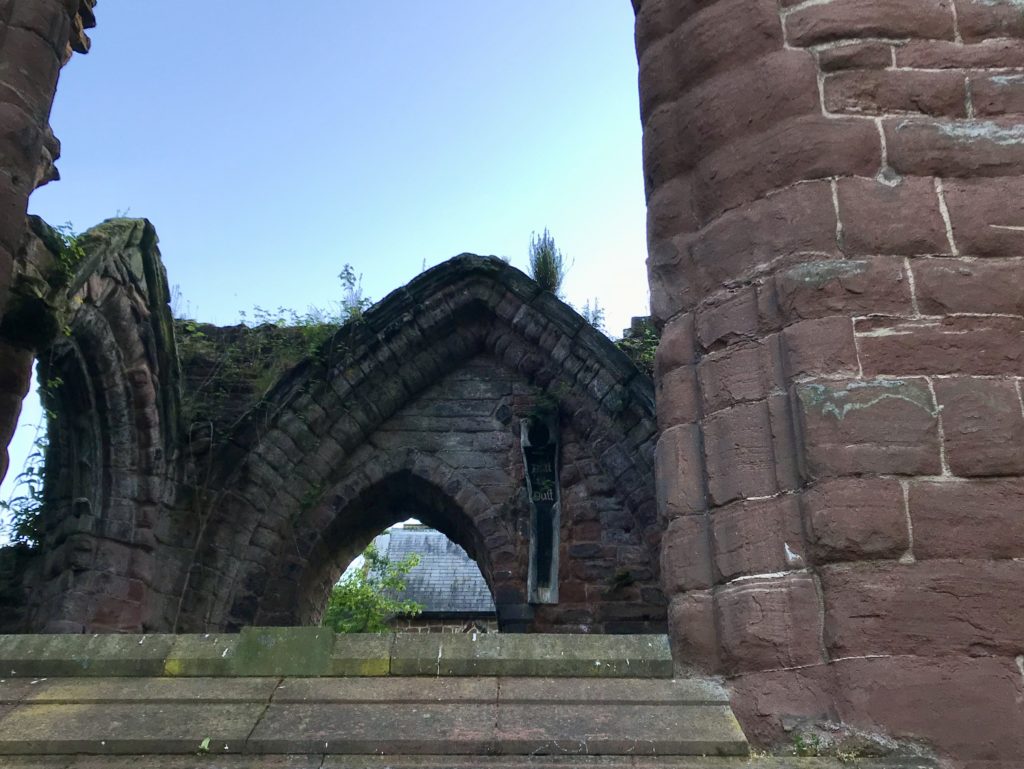It’s one of the Chester’s favourite ghost stories.
The tale of a mystery figure, dressed as a monk and spotted on a winter evening, walking along the spooky passage by St John’s Church — the one with the coffin in the east walls [pictured above].
The figure has been seen many times over the years, patrolling the passageway beyond the westerner facade, which leads towards The Groves, the riverside walkway.
His presence is linked not with the church, however.
The Hermitage, the hidden building on a sandstone outcrop between the city walls and the river, is alleged to be his home.
The mysterious building, now privately owned and a reputed hotbed of poltergeist activity over the years, is also known by the name on its tucked-away entrance gate, The Anchorite Cell.
The story suggests the mystery man could be King Harold Godwinson, the vanquished Saxon king who got something in his eye at the Battle of Hastings in 1066.
It’s a story we all know from school history classes and one made famous by the Bayeux Tapestry.
Waltham Abbey in Essex claims the last resting place of King Harold. There’s even a stone marked with the words:
“This stone marks the position of the high altar behind which King Harold is said to have been buried in 1066.”
But Chester offers a different version of the story.
Local historians suggest that Harold’s mistress, Edith Swan Neck, rescued her lover from the battlefield and brought him to Chester to live out days in The Hermitage.
Disguised as a monk, he blended into the local community of holy men, who made their home at St John’s since the 7th century.
Edith cared for him during his final days, bringing supplies to his secret Chester hideaway.
It’s easy to dismiss the story as ghost-tale tosh but the sightings over the year offer first-hand accounts.
And excavations of the collapsed western facade years later unearthed two human skeletons entwined together in an eternal repose.
It’s a story I look forward to retelling when Chester Ghost Tours return after lockdown, especially if I’m leading a tour around King Harold’s Day, the nearest Saturday each year to October 14th.
Could the mystery monk behind Chester’s favourite ghost story be a long-lost King?
That would be one in the eye for Essex.
- Liked this? Try also The hidden story behind the Roman Gardens.
- Sign up to my newsletter for more articles and writing workshops.
